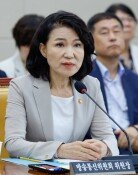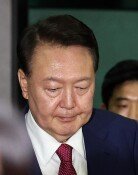Pyongyang District is the Best Industrial Site
Pyongyang District is the Best Industrial Site
Posted May. 27, 2001 10:04,
According to an analysis, after reunification, Pyongyang would be the best industrial site and Chongjin and Wonsan on the east coast would also be the excellent locations that have lots of potentials to develop. And for the united economy after reunification, the production of the electronics, such as semi-conductors and computers, would be ideal for the South Korean companies. The technology-intensive industries, such as office equipments, and the heavy industries, such as steel and metal industries, would also be the promising fields.
The Federation of Korean Industries (KFI) released `the South-North industrial map on a unified Korean Peninsula on 27th, based on the study of the best arrangement of the industries considering the conditions of the location of the Korean peninsula, after the summit talks between two Koreas last year.
The South-North industrial map has been created to suggest the guideline that is necessary for the South Korean companies to advance to the North. It will play a role of `the investment guide` in the economic negotiations between two Koreas.
According to the report, the light-industry goods such as food, textile, leather and shoes, and some heavy industries such as glass, cement, steel and metal would be ideal for the Pyongyang district where the Social Overhead Capital (SOC) has been well established.
The report anticipated that among the western coast regions, the manufacturing industry related to automobiles and the chemical goods for the Anju industrial district, the high-tech industry such as the electronic communication equipment and the precision machinery for the Haeju industrial district, and the manufacturing industry such as pulp, paper and textile goods for the Shineuju industrial district, would be promising.
The KFI analyzed that the Gimchaek industrial district on which the North Korea has focused for the development would be superior only in the area of paper manufacturing industry. Chongjin and Wonsan districts would have more potential respectively in the fields of metal and automobile, and computer and office equipment.
Jung Oh-Young, the director of the South-North economy team in the KFI, explained that in general, while the electrics, electronics, machinery, paper, and publishing industries would have the high possibility of success in the North Korea, it was hard to find the suitable locations for the oil refinery, the assembly of metals, and the plastic industries.
The KFI also pointed out that ``if the investment of $5.9 billion is completed efficiently, the GDP of North Korea may increase by 9.7 percent. But unless two Koreas will back up the industrial cooperation, there is a possibility to generate the stagnation of the North Korean industries because the investment will be concentrated on the agricultural and miner industries.
Park Won-Jae parkwj@donga.com





![[속보]트럼프 “한국, 자국 방위비 부담해야”](https://dimg.donga.com/c/138/175/90/1/wps/NEWS/IMAGE/2025/07/09/131965217.1.jpg)

